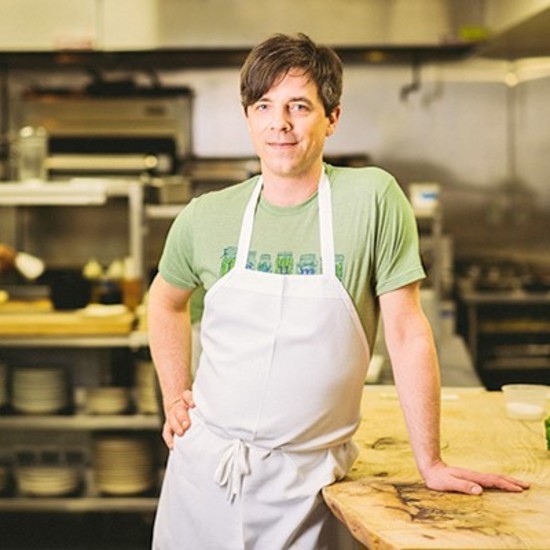5 Questions with Chef Trevett Hooper, Legume Bistro
1. Using one ingredient/product that gets 100% utilization as an example, tell us how that ingredient travels through your kitchen, and the different places it ends up?
We use the cobs from fresh corn to make stock in the summer months. It has a great flavor and a natural sweetness that lends itself to many applications, especially vegetarian. To make it, we just boil leftover corncobs from which the kernels have been removed--no other aromatics.
We use the corn stock in corn soup, to replace water in polenta and corn grits.
Another thing is pickle brines, which we use in cocktails, braises, sauces, and vinaigrettes.
2. What ingredient(s), for example, would most be surprised to learn has gone from bin to menu?
I can't stress enough how wonderful chicken schmaltz is. After we skim chicken stock of impurities during the first 30 minutes of so, we skim the fat off the top and use it like we would use canola oil to sauté all of our meat and poultry proteins in. Replacing purchased canola oil with something that we used to go out in the oil barrel has saved us a lot of money.

3. How did you go about engaging and inspiring your employees towards your sustainability vision?
I write a monthly newsletter which I share with my guests and my staff. It is mostly about what goes into the food behind-the-scenes, the relationships with our farmers and stories about local foods. The regular distribution of the newsletter has been very valuable for us in terms of shaping the narrative about our restaurant.
4. What did you find was the number one cause for waste in the kitchen and how did you address that?
I mentioned in the meeting that our #1 waste was staff meal, and that we addressed it by paying more attention to how much we were making. We also worked on making staff meal better every day, which also reduced leftovers because people were more excited to eat it!
5. How do you creatively utilize and re-purpose leftovers?
My best approach to leftovers involves understanding the value of having dual concepts, high-end and low-end close to each other. For example, being able to have an outlet for broken portions that might not work on a high-end menu, but can get shredded into a ragout to be served over pasta at a more casual spot next door.





